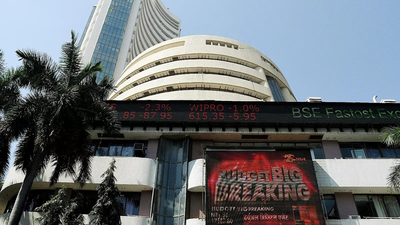Rupee outlook: Jefferies says INR may have bottomed after worst EM performance in 2025; domestic inflows offset FPI selling

 In its latest GREED & fear note, Jefferies said the rupee has been “the worst performer year to date amongst major emerging market currencies,” slipping 3.4 per cent in 2025 to trade near Rs 88.7 per US dollar.
In its latest GREED & fear note, Jefferies said the rupee has been “the worst performer year to date amongst major emerging market currencies,” slipping 3.4 per cent in 2025 to trade near Rs 88.7 per US dollar.
The firm added that it now sees a “growing likelihood that the rupee has bottomed,” citing macroeconomic resilience and improving balance-of-payments conditions.Jefferies highlighted a current account deficit at a two-decade low of 0.5 per cent of GDP and foreign exchange reserves of USD 690 billion—providing nearly 11 months of import cover—as key stabilising factors.
The brokerage added that its India strategist had “been assuming, so far correctly, that 89 should mark the bottom for the rupee.”On equities, Jefferies pointed to heavy foreign outflows this year, with FPIs selling USD 16.2 billion so far in 2025 and dragging India’s relative performance down by 27 percentage points versus the MSCI Emerging Markets Index.However, robust domestic inflows have more than compensated.
Equity mutual funds recorded Rs 321 billion (USD 3.6 billion) of net inflows in October and Rs 3.7 trillion (USD 42 billion) in the first ten months of the year.
Across channels, domestic equity inflows averaged USD 7.4 billion a month between January and September—sufficient to absorb the USD 5.7 billion in monthly equity supply, the report said.Jefferies also flagged firm credit momentum, with bank lending growth accelerating from 9 per cent in May to 11.5 per cent by mid-October.
FDI trends remain supportive as well, with gross inflows rising 13 per cent in 2024–25 to USD 81 billion and up 18 per cent year-on-year during April–August 2025.A major thematic focus of the report is India’s positioning in the global artificial intelligence cycle.
Jefferies described India as the “reverse AI trade,” arguing that if the global AI rally cools, India could outperform while AI-heavy markets like Taiwan, Korea and China face pressure.“These three countries currently account for 61.8 per cent of the MSCI Emerging Markets Index, while India accounts for 15.3 per cent,” the brokerage noted.



